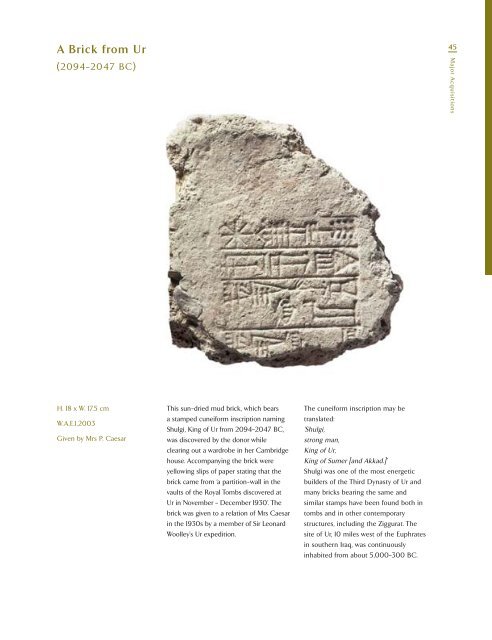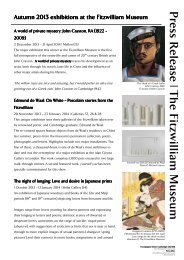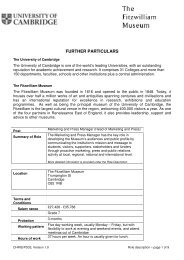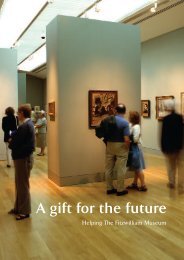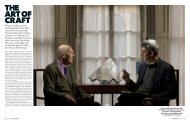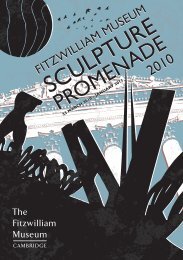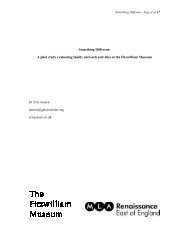The Fitzwilliam Museum - University of Cambridge
The Fitzwilliam Museum - University of Cambridge
The Fitzwilliam Museum - University of Cambridge
Create successful ePaper yourself
Turn your PDF publications into a flip-book with our unique Google optimized e-Paper software.
A Brick from Ur<br />
(2094–2047 BC)<br />
H. 18 x W. 17.5 cm<br />
W.A.E.1.2003<br />
Given by Mrs P. Caesar<br />
This sun-dried mud brick, which bears<br />
a stamped cuneiform inscription naming<br />
Shulgi, King <strong>of</strong> Ur from 2094–2047 BC,<br />
was discovered by the donor while<br />
clearing out a wardrobe in her <strong>Cambridge</strong><br />
house. Accompanying the brick were<br />
yellowing slips <strong>of</strong> paper stating that the<br />
brick came from ‘a partition-wall in the<br />
vaults <strong>of</strong> the Royal Tombs discovered at<br />
Ur in November – December 1930’. <strong>The</strong><br />
brick was given to a relation <strong>of</strong> Mrs Caesar<br />
in the 1930s by a member <strong>of</strong> Sir Leonard<br />
Woolley's Ur expedition.<br />
<strong>The</strong> cuneiform inscription may be<br />
translated:<br />
'Shulgi,<br />
strong man,<br />
King <strong>of</strong> Ur,<br />
King <strong>of</strong> Sumer [and Akkad.]'<br />
Shulgi was one <strong>of</strong> the most energetic<br />
builders <strong>of</strong> the Third Dynasty <strong>of</strong> Ur and<br />
many bricks bearing the same and<br />
similar stamps have been found both in<br />
tombs and in other contemporary<br />
structures, including the Ziggurat. <strong>The</strong><br />
site <strong>of</strong> Ur, 10 miles west <strong>of</strong> the Euphrates<br />
in southern Iraq, was continuously<br />
inhabited from about 5,000–300 BC.<br />
45<br />
Major Acquisitions


